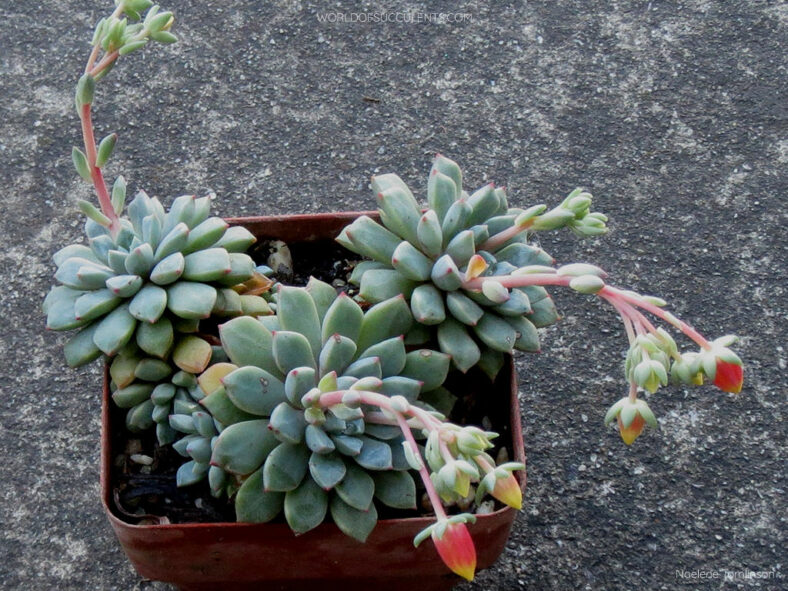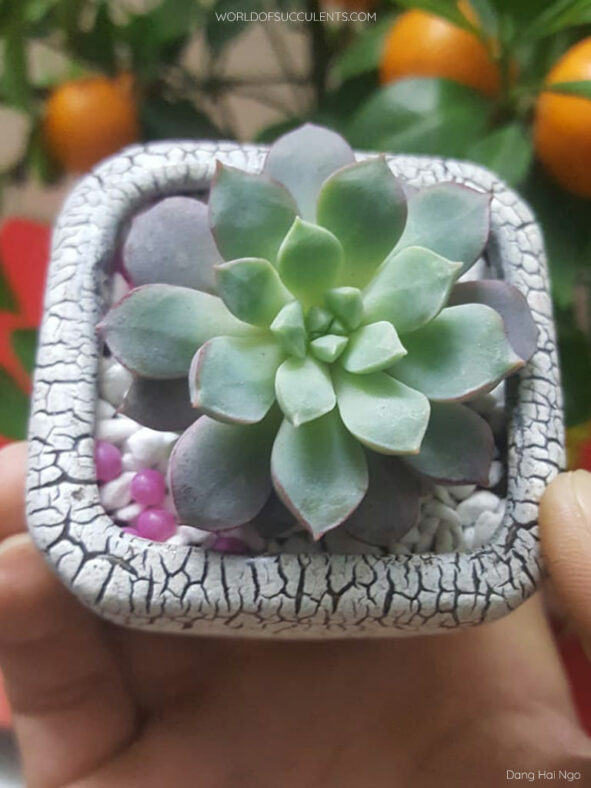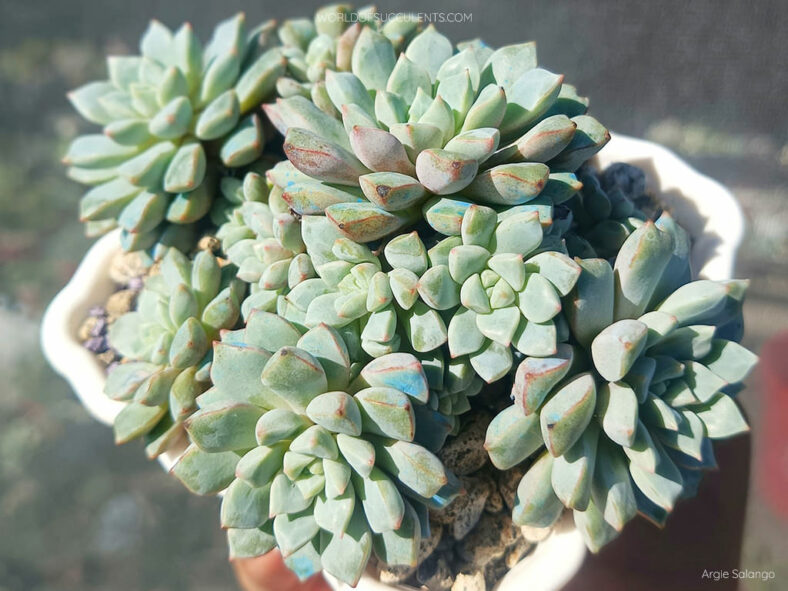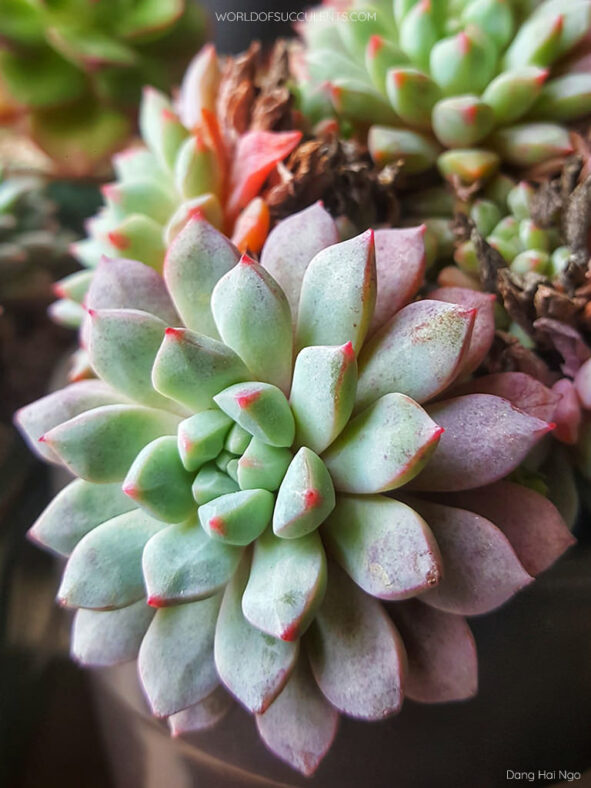Scientific Name
Echeveria subcorymbosa 'Lau 30'
Accepted Scientific Name
Echeveria subcorymbosa Kimnach & Moran
Scientific Classification
Family: Crassulaceae
Subfamily: Sempervivoideae
Tribe: Sedeae
Genus: Echeveria
Etymology
The specific epithet "subcorymbosa" (pronounced "sub-kor-rim-BOW-suh") means "almost in the form of a cluster of fruit or flowers". It refers to the racemose inflorescence that appears corymbose because of the long lower pedicels.
Origin
Alfred Lau discovered two forms of Echeveria subcorymbosa, both of which have identical flowers. He found this form near Laguna Encantada, north of Santiago Juxtlahuaca, in the Mexican state of Oaxaca.
Description
Echeveria subcorymbosa 'Lau 30' is a small succulent that forms compact, short-stemmed rosettes of glaucous, bluish-grey leaves with reddish margins and often red-flecked on the lower surface. The brown stem can grow up to 2 inches (5 cm) tall, while the rosettes are usually about 1.2 inches (3 cm) in diameter. The leaves are ascending or upcurved, spoon-shaped, ending in a sharp point.
The egg-shaped flowers are reddish-orange in the lower portion and yellow in the upper part. They can reach about 0.6 inches (1.5 cm) in length and 0.3 inches (0.8 cm) in diameter. In summer, the flowers appear on stalks with few bracts. The flower stalks can grow up to 4.4 inches (11 cm) long.

How to Grow and Care for Echeveria subcorymbosa 'Lau 30'
Light: E. subcorymbosa 'Lau 30' prefers full sun to partial shade. If you move your plant outside in the spring, do it gradually. The intense afternoon sun can cause sunburn. During the winter, when your E. subcorymbosa 'Lau 30' is inside, put it near the brightest window in your home. It will stretch if it does not have enough sunlight.
Soil: This succulent needs a potting soil mix that drains quickly. Many growers create their own mixes, but commercial succulent potting mixes are also effective.
Temperature: This tender succulent must be brought indoors to survive winter. E. subcorymbosa 'Lau 30' can withstand temperatures as low as 30°F (-1.1°C). USDA Plant Hardiness Zones 10a to 11b, 30°F to 50°F (-1.1°C to 10°C).
Watering: Provide moderate amounts of water from spring to fall. The "soak and dry" method is the recommended watering schedule for E. subcorymbosa 'Lau 30'. If you have saucers under the pots, briefly empty the water. Water your plant just enough to keep it from shriveling during winter.
Fertilizing: E. subcorymbosa 'Lau 30' grows well without fertilizer, but may benefit from additional nutrients. In the spring, use a slow-release or liquid fertilizer diluted 2 to 4 times more than usual and apply it less often than recommended.
Repotting: Repot the plant only as needed, typically during spring or early summer, when it is actively growing. To repot your E. subcorymbosa 'Lau 30', ensure the soil is dry before repotting.
Propagation: Like all Echeverias, this succulent is usually propagated from leaves and offsets, but it can also be grown from stem cuttings and seeds. Spring is the best time to take cuttings and separate offsets. Sow the seeds in spring or summer.
Learn more at How to Grow and Care for Echeveria.
Toxicity of Echeveria subcorymbosa 'Lau 30'
E. subcorymbosa 'Lau 30' has no toxic effects reported. It is safe around pets and humans, although it is not advisable to eat it.
Links
- Back to genus Echeveria
- Succupedia: Browse succulents by Scientific Name, Common Name, Genus, Family, USDA Hardiness Zone, Origin, or cacti by Genus
Photo Gallery
Click on a photo to see a larger version.


